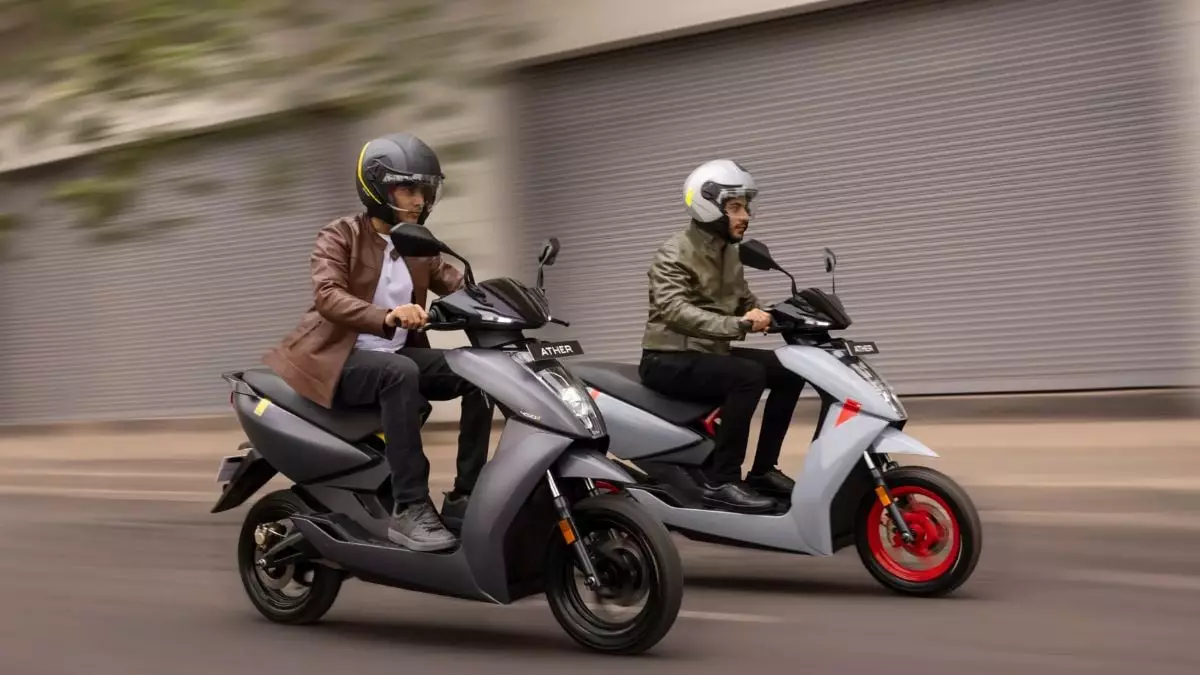The Indian electric vehicle (EV) market is experiencing a significant transformation, and the unveiling of the 2025 Ather 450 series marks a notable step forward. Ather Energy, a Bengaluru-based startup, has introduced three models—Ather 450, Ather 450X, and Ather 450 Apex—that build on their reputation for innovative electric scooters. The announcement has been met with mixed reactions, particularly due to the corresponding price increases, but the upgrades may justify these costs.
The 2025 Ather 450 series kicks off at an ex-showroom price of Rs. 1,29,999 for the base model, the Ather 450S. The pricing for the 450X model tiers up to Rs. 1,46,999 and Rs. 1,56,999, based on the battery options of 2.9kWh and 3.7kWh respectively. The premium Apex variant is positioned at Rs. 1,99,999. While the price increases have sparked conversations about affordability, it is crucial to analyze what riders are getting in return for their investment.
The introduction of a Pro pack, available for additional costs ranging from Rs. 14,001 to Rs. 20,000 depending on the model, adds an extra layer of customization. This component includes cutting-edge features that elevate the riding experience while also presenting an opportunity for more serious riders to enhance their scooters’ capabilities.
Technological Advancements: Traction Control and Regenerative Braking
A strong selling point for the 2025 Ather 450 series is the incorporation of a multi-mode traction control system. This innovative feature offers three distinct modes: rain, rally, and road. Each mode serves a unique purpose: rain mode prioritizes safety by limiting acceleration in wet conditions, rally mode enhances maneuverability over rugged terrain, while road mode strikes a balance between speed and security. Such technological advancements cater to a variety of riding conditions, showcasing Ather’s commitment to maximizing rider safety and comfort.
Additionally, the “Magic Twist” regenerative braking system is a groundbreaking feature that allows riders to manipulate speed and braking more intuitively. Riders can slow down the scooter by reversing the throttle, simultaneously engaging regenerative braking to recharge the battery. This seamless integration of functionality not only enhances the riding experience but also promotes energy efficiency—a crucial element for electric vehicles.
Range anxiety is a critical concern for potential EV buyers, and Ather has made strides in addressing this issue with longer claimed ranges and reduced charging times for the 450 series. The Ather 450S offers an Indian Driving Cycle (IDC) range of 122 kilometres, while the standard version of the 450X provides a 126-kilometre range. Notably, the 3.7kWh variant can stretch to an impressive 161 kilometres before needing a charge—a significant upgrade from earlier models.
Charging efficiency is another area of focus. The 450S requires 5 hours and 30 minutes to reach an 80 percent charge, whereas the standard Ather 450X can achieve a full charge in about 3 hours. For the variant with the larger battery, a full charge takes approximately 4 hours and 30 minutes. The Apex model takes a bit longer, at 5 hours and 45 minutes, but considering the increased range, this may be an acceptable trade-off for many riders.
The 2025 Ather 450 series represents a significant advancement in electric scooters, promising enhanced safety features, better performance, and a more user-friendly experience thanks to improved technology. However, the higher price tag is a contentious issue that potential buyers will have to weigh against the upgrades on offer.
Ultimately, Ather Energy has positioned itself as a dominant player in the electric scooter market with innovative features that align with growing consumer expectations for sustainability and efficiency. As electric mobility continues to evolve, the Ather 450 series might well be a benchmark for future developments, inviting riders to embrace a cleaner, more technologically sophisticated mode of transportation. This series is not just a product; it’s a step towards a future where electric mobility is the norm rather than the exception.


Leave a Reply